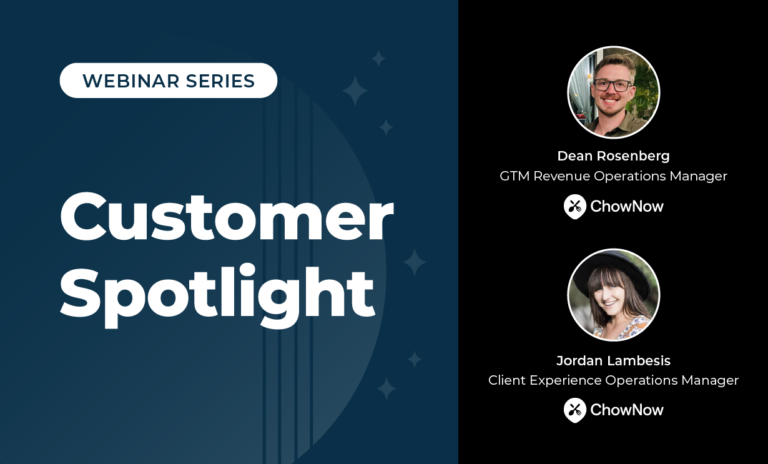Orchestrating account-based marketing (ABM) has never been so important to include in an organization’s go-to-marketing (GTM) motions as it is now. First off, buyers demand increasingly personalized buying journeys and exceptional buying experiences. Moreover, ABM motions tend to show higher customer engagement rates and larger average deal sizes.
ABM provides both buyers and sellers with what they want most.
However, despite its value, the adoption of ABM has hit a few obstacles along the way. The ABM Leadership Alliance’s 2020 benchmark study showed that over half of respondents are only exploring or experimenting with ABM, and only 13 percent described their ABM programs as fully embedded and a driver of strategic growth.

Account-based strategies often run into difficulties when companies uncover the problematic challenges inherent in trying to scale their ABM motions with out-of-the-box solutions, in particular the following:
- Aligning the Marketing and Sales functions within the organization
- Developing a list of targeted accounts that match with the organization’s ideal customer profile (ICP)
- Triaging disconnected or missing Lead, Contact and Account data
- Curating and distributing the best content for account and lead engagement
- Working around inflexible systemic Lead, Contact and Account routing
- Crafting and delivering personalized customer experiences
After reviewing this post, you’ll be able to discern how best to utilize your instance of Salesforce to power your ABM motion, bringing your Sales and Marketing resources into alignment with your most valuable marketplace opportunities.
Requirements for deploying account-based marketing
To succeed in your ABM efforts, your team will need a clean data infrastructure. Without a solid foundation of account and contact data in Salesforce, your ABM campaigns are doomed to be unorganized from the start, confusing your Sales team and greatly limiting the efficiency and effectiveness of your processes.
Additionally, prior to deploying your ABM motion, you and your team will need to complete several prerequisites to be effective:
- Create a well-mapped targeted account list
- Curate a collection of multichannel content assets,
- Determine clear calls-to-action (CTAs) on every outreach activity
- Define a comprehensive follow-up strategy
Of course, as an ABM motion is, by definition, account-based, the first place you need to start in your Salesforce data is with the Account object.
Salesforce Lead-to-Account matching
In deploying your ABM motion, your Marketing team will need to shift from a Demand Generation-type paradigm of prospecting and nurturing Leads to one of prospecting and nurturing Contacts within targeted Accounts. However, a big assist in that transition will likely come from the many account-associated Leads you already have in your Salesforce data.

LeanData’s Lead-to-Account Matching solution, a native Salesforce application, uses its best-in-class fuzzy matching algorithm to analyze Lead records and match them to existing Accounts in your Salesforce instance. With the matching solution, you define your own rules and filters for the most accurate match, ensuring multiple account matches, complex parent-child account hierarchies, and duplicate accounts are managed the way your team demands.
Matching provides a holistic view of the Account to your Sales and Marketing teams, and delivers them the necessary context needed to accelerate their ABM activities. There’s no need to hamper your team members with time-consuming triaging of poor, unmatched and disconnected Lead data.
Your Marketing team might also implement third-party data tools like Zoominfo to enrich the data you collect for your Accounts. Depending on your process for importing into Salesforce, however, it’s possible your Accounts records will be missing valuable fields of information that help determine if they match your ICP.
As you further refine your ABM strategy, ensure you’re taking proper rigor in identifying the key attributes that make up your ICP – industry or industry segment, size in terms of revenue and/or employees, types of software systems needing to integrate with, and others. Depending on your own ICP criteria, it may be necessary to add custom fields to your Salesforce records.
If your team uses data providers who integrate with Salesforce, you can control the field mapping process from within your instance. However, if your tech stack necessitates manual list imports, you’ll need to ensure your spreadsheet columns are precisely and correctly labeled to match their corresponding fields in Salesforce. Pro tip: Create a list import template with the correct headers for Salesforce, then format your CSV file with those columns before importing.
Automating account-based marketing in Salesforce
Salesforce, with its Marketing Cloud and Pardot marketing automation, as well as Einstein, its proprietary artificial intelligence (AI) solution, generally meets the needs of your Sales and Marketing with respect to powering your ABM motion.
Salesforce’s suite of solutions helps get your ABM motion off the ground, and they provide assistance in the following critical functions:
- Identifying key accounts. Salesforce’s Einstein application scours your CRM data, external data, and any resultant engagement data to determine your best Accounts, allowing your team to focus on its most valuable targets.
- Engaging buyers. Personalizing every message delivered at all customer touchpoints paves the way to acquire new prospects from target Accounts and further nurture along the customer journey.
- Delivering connected engagements. Aligned Sales and Marketing teams use real-time data and shared templates to work toward their common goals and objectives.
- Growing customer relationships. Measurements on the successes of your ABM campaigns and the tracking of how targeted Accounts are progressing through the funnel allows you to refine and continuously improve your ABM campaigns over time.
Critical to your ABM success will be your effective routing of Leads, Contacts and Accounts, as it empowers your revenue team to act upon your Lead-to-Account matched data in Salesforce.
LeanData supercharges ABM motions in Salesforce
As noted above, LeanData sits within Salesforce as a native application, meaning it is built completely within Salesforce using the Lightning platform and, therefore, doesn’t require integration with Salesforce through an API. As such, none of your valuable customer data ever leaves the security of your Salesforce instance.
LeanData Matching maps Leads to Accounts, providing your ABM motion with a comprehensive overview of each targeted Account. Whether enriched with data from Zoominfo or another, or coupled with information from tools like LinkedIn Sales Navigator, your Sales team will have all the necessary data to target prospects at your highly valued accounts.
After matching Leads to Accounts, LeanData account-based lead routing then automates the routing of each Lead to the appropriate Sales representative at the right time so your team can get to selling – and booking revenue – as soon as possible.
Enhance your ABM strategy today
An ABM strategy joins data management with marketing automation to create personalized campaigns for the targeted Accounts you’d like to serve. As you scale your ABM motion, you need to know exactly what Leads and Contacts to go engage, who to assign Leads to, and the ideal time to engage them with your messaging and content. To do that, you need the right mindset, the right skill set, and the right tool set.
Account-based marketing is not easy, but it’s worth the effort to get it right as it delivers a high return on investment for those organizations who have succeeded in making it a fully embedded driver of strategic growth. Whether you’re an established enterprise with a large contingent of Demand Gen marketers or a new startup with a Marketing team of one, use the ABM principles above to refine your motion and optimize your most important GTM strategy to scale your business.










